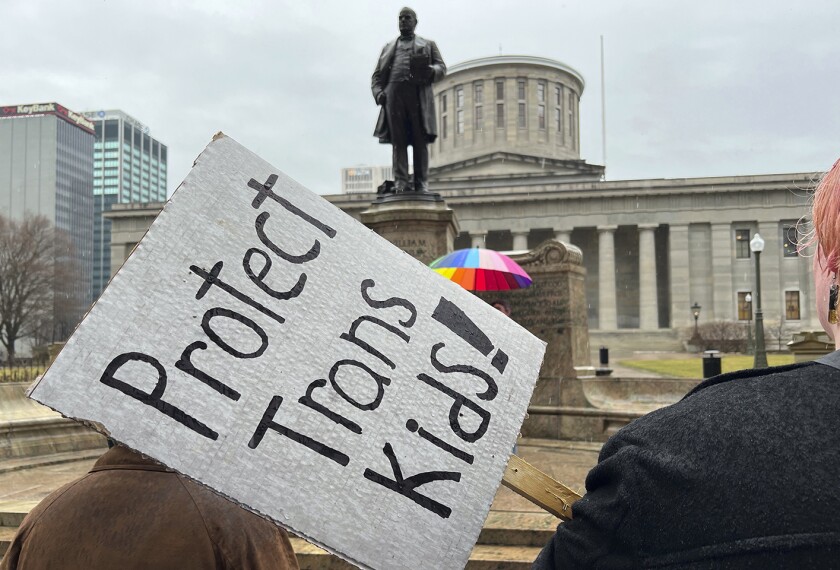With an anxious eye on the troubled credit markets, Congress is urging the Department of Education to prepare for the possibility that families might face problems in securing student loans for higher education.
So far, lawmakers and department officials agree that the credit crunch hasn’t had much of an effect on the availability of federally backed student loans. Still, Secretary of Education Margaret Spellings has assured lawmakers that her department is taking steps to make sure federal remedies are in place should the situation change.
“Federal student aid will continue to be available,” Ms. Spellings said at a March 14 hearing of the House Education and Labor Committee on the availability of student loans.
Rep. George Miller, D-Calif., the chairman of the panel, and Sen. Edward M. Kennedy, D-Mass., the chairman of the Senate Health, Education, Labor, and Pensions Committee, sent the secretary a letter last month asking if the department was prepared to handle a potential credit crisis in the student-loan market.
Their letter stated that the credit crunch “so far has not negatively affected students’ ability to access federal loans.”
“That’s what we’re seeing also,” Ms. Spellings said at the House panel’s hearing.
But the Education Department is working to ensure that federally backed guarantee agencies are ready to serve as “lenders of last resort.” Such agencies provide a safety net in case students have trouble getting federal loans. And if those lenders of last resort have difficulty securing the necessary capital, the Education Department can ask the Department of the Treasury to advance federal funds to the guarantee agencies so that they can make the loans.
The “lender of last resort” plan was established in 1998, but the Education Department has never needed to implement it.
But Rep. Miller said having the authority to turn to the Treasury is not the same as ensuring the money will be made available if necessary.
“Have you road-tested” that scenario, he asked Secretary Spellings. “Most of the things that have happened in the credit market have come as a surprise to everyone, including those involved.”
Ms. Spellings said the Education Department has been in communication with the Treasury Department about the situation.
Real Crisis?
Rep. Howard P. “Buck” McKeon of California, the top Republican on the House education panel, said he’s worried that nearly $20 billion in subsidy cuts to student lenders enacted last year as part of the College Cost Reduction Act have left lenders more vulnerable to the volatility in the credit markets.
“While the cuts imposed last fall are not the cause of the current market instability, they certainly are playing a role,” Rep. McKeon said. “Those cuts, coupled with the current instability in the credit markets, may create the perfect storm in which lenders find themselves unable to finance student loans.”
Last week, three banks decided to drop out of the federal student-lending program for the coming academic year: HSBC Bank USA, based in New York City; M & T Bank Corp., based in Buffalo, N.Y., and TCF Financial Corp., based in Wayzata, Minn., according to published reports. At least one of those banks, HSBC, cited the subsidy cuts as a reason.
•Direct Loans—Students borrow directly from the U.S. Treasury. About 20 percent of all federal loans are direct loans.
•Federal Family Education Loan Program—The government guarantees and subsidizes loans that private lenders provide to students or parents. About 80 percent of federal loans are under this program.
•Private loans—Banks and other lenders issue loans directly to borrowers. About 24 percent of all student loans are private loans, which are not guaranteed by the government.
SOURCE: U.S. Department of Education
Some advocates question whether a crisis is truly looming. Barmak Nassirian, the associate executive director of the Washington-based American Association of Collegiate Registrars and Admissions Officers, said student lenders might be using the uncertainty in the credit markets to persuade lawmakers to reverse some of last year’s subsidy cuts.
“Lenders are using the credit crunch, which has nothing to do with the configuration of federal student loans, as an excuse to rally the troops. It’s a very cynical, transparent move, but Congress is a nervous nelly,” Mr. Nassirian said. “Can somebody show us one school where one student went without a federally guaranteed loan?”
To avoid potential credit problems for their students, colleges could switch from the Federal Family Education Loan Program, which subsidizes private lenders who may be vulnerable to problems in the credit market, to the federal Direct Lending program, in which students borrow directly from the U.S. Treasury.
So far, the vast majority of colleges have chosen to remain in FFELP, rather than shifting to the government-operated lending program. But Secretary Spellings told the House education committee that her department is tracking such switches. A few colleges, including Pennsylvania State University in State College, have left FFELP for the Direct Lending program. Colleges can participate in one or both programs.
Ms. Spellings said her department was prepared to double the capacity of the Direct Lending program, if necessary. But she supports having both in place so colleges can choose the option that best fits their needs.
Private-Loan Problems
Lawmakers and advocates are also anxious about the availability of private loans, which make up about 24 percent of all student loans and aren’t backed by the federal government.
Philip Day, the president of the National Association of Student Financial Aid Administrators, in Washington, said in a statement that his organization’s members report that the credit score needed to secure such loans is rising and that some lenders are hiking interest rates and fees.
Those developments could pose a particular problem for students who attend for-profit colleges, two-year community colleges, and other institutions that serve large populations of low-income students.
Some advocates say the potential problems in the private-loan market may ultimately protect students from taking out loans they can’t pay back. Luke Swarthout, a higher education advocate for the U.S. Public Interest Research Group, a student- and consumer-advocacy organization in Washington, said that in recent years some private loans were extended to students at high-tuition institutions, particularly for-profit colleges, with low graduation rates.
“It’s an insidious type of access,” Mr. Swarthout said, comparing such private student loans to so-called subprime mortgages—home loans made to buyers who often had poor credit or were unable to afford their monthly payments.
So far, students and their parents haven’t expressed significant concern about the possibility of a credit squeeze, said Evelyn Boyd White, the guidance coordinator at Thomas Dale High School in Chester, Va., in the 58,000-student Chesterfield County school district.
But she expects that to change once students begin receiving their college acceptances next month.
That’s partly because of the concerns about student loans. But it’s also because students whose parents are in danger of losing their homes as a result of problems in the mortgage market may be reticent to take on student-loan debt. “I just don’t think it’s hit the fan yet,” Ms. White said.





